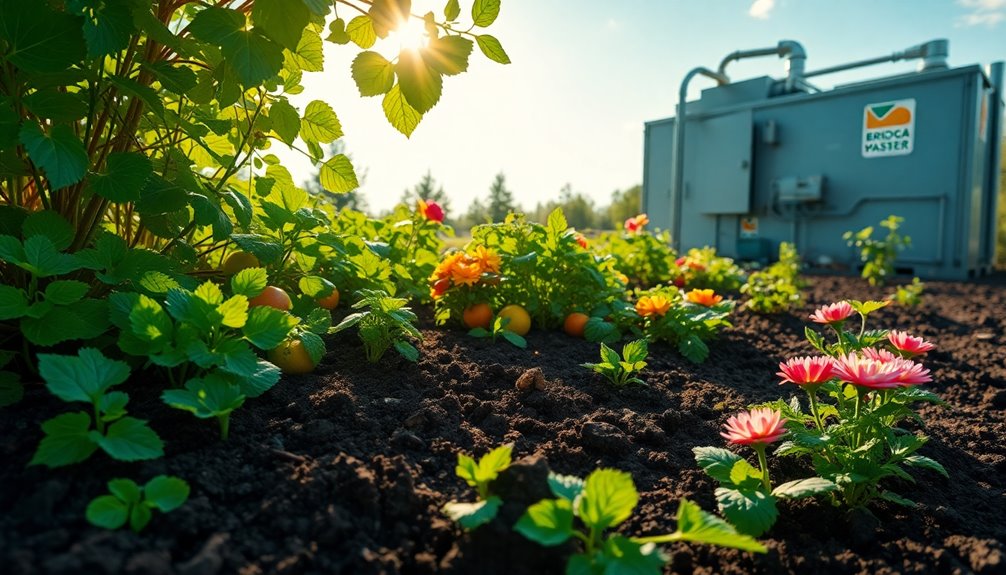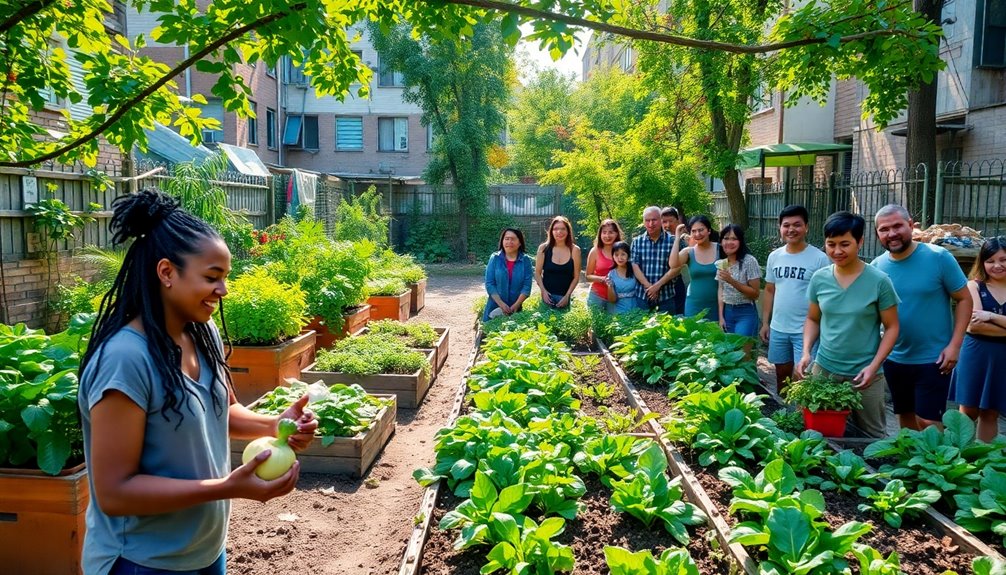Waste-to-nutrition solutions can bring substantial environmental gains by cutting greenhouse gas emissions and reducing landfill methane. By transforming food waste and crop residues into edible ingredients, you help conserve water, energy, and labor, all while enhancing soil health through composting. This process not only supports local economies but aligns with circular economy principles, creating a more sustainable future. If you keep exploring, you'll discover even more ways these solutions benefit both the environment and communities.
Key Takeaways
- Reducing greenhouse gas emissions significantly lowers the carbon footprint associated with food production and waste management.
- Minimizing methane emissions from landfills contributes to improved air quality and public health.
- Enhancing soil health through composting returns vital nutrients, promoting sustainable agricultural practices.
- Efficient waste conversion processes conserve resources like energy, water, and labor, supporting environmental sustainability.
- Stimulating local economies through innovative waste management creates job opportunities and fosters community engagement in sustainable practices.

As you navigate the growing challenges of food waste and environmental sustainability, waste-to-nutrition solutions emerge as a promising pathway toward a circular economy. These innovative pathways involve converting residual biomass into edible ingredients, significantly reducing food waste while providing nutritional value. With over 150 different feedstocks, including crop residues and food waste, you can tap into various resources to create sustainable food systems.
The process is systematic, relying on four building blocks: enhancement, cracking, extraction, and bioconversion. By utilizing these methods, you can effectively decouple nutrition from arable land use, reducing the land demand for food production. This approach not only stimulates innovation and supports local economies but also conserves essential resources like energy, water, and labor during food production and distribution. Additionally, the effective use of systematic literature review can provide insights into optimizing these waste-to-nutrition solutions. In understanding this process, you should also consider the importance of long-term financial planning for implementing sustainable practices.
You'll find that waste-to-nutrition solutions contribute to greenhouse gas emissions reduction by minimizing methane emissions from landfills. This means a lower overall carbon footprint for your community and improved air quality.
Plus, by preventing pollution associated with growing, processing, and transporting food, you're actively improving the environment around you. Composting practices enhance soil health by returning vital nutrients, completing the cycle of sustainability.
Consider specific pathways like insect biorefineries or microbial protein production. These methods convert organic waste into protein-rich food sources, demonstrating how nature can help meet human nutritional needs. The impact on food waste is profound: proper management could feed millions of undernourished people, while national initiatives aim to cut food waste by half by 2030.
As you engage with these solutions, you'll realize their role in supporting circular economy principles. Technological innovations and policy support further enhance waste conversion efficiency, promoting a more sustainable food system.
Ultimately, fostering public awareness and improving supply chain efficiency can reduce unnecessary food disposal, creating a healthier, more sustainable future for all.
Frequently Asked Questions
How Can Individuals Participate in Waste-To-Nutrition Initiatives?
You can participate in waste-to-nutrition initiatives by volunteering at local food banks or community gardens.
Start by planning your meals to reduce food waste, and consider buying "ugly" produce to give it a second chance.
Educate yourself and others about proper food storage and composting.
Join local campaigns that raise awareness about food waste.
Lastly, support policies and technologies that promote food recovery and redistribution efforts in your community.
What Types of Waste Are Most Suitable for These Solutions?
Waste that's wonderfully organic works best for waste-to-nutrition solutions.
You'll find food scraps, yard trimmings, and manure are prime picks for these processes. Anaerobic digestion thrives on food waste and sewage sludge, while aerobic composting loves yard waste and paper products.
Are Waste-To-Nutrition Solutions Cost-Effective for Communities?
You'll find that waste-to-nutrition solutions can be quite cost-effective for communities.
By reducing waste disposal costs and creating new jobs, these initiatives save money in the long run.
Additionally, communities can benefit from financial incentives, like tax breaks for businesses that donate food.
How Do These Solutions Impact Local Ecosystems?
Think of local ecosystems as a delicate tapestry, where every thread matters.
When you embrace waste-to-nutrition solutions, you're enhancing soil fertility and promoting biodiversity. By composting or digesting food waste, you're returning vital nutrients to the earth, supporting microorganisms essential for health.
Plus, you're reducing greenhouse gas emissions and conserving resources, all while fostering healthier ecosystems.
Your actions create a ripple effect, benefiting both the environment and the community around you.
What Are the Long-Term Benefits of Adopting Waste-To-Nutrition Practices?
Adopting waste-to-nutrition practices brings long-term benefits like enhanced food security and reduced waste disposal costs.
You'll notice improved community health as surplus food reaches those in need, fostering equity.
Job opportunities arise in processing and distribution, empowering local economies.
Plus, you'll contribute to environmental sustainability by minimizing landfill waste and lowering greenhouse gas emissions.
Conclusion
Imagine walking through a vibrant community garden, where food thrives thanks to waste transformed into nutrition. You see children playing, their laughter echoing as they munch on fresh veggies, all made possible by innovative waste-to-nutrition solutions. It's a beautiful coincidence that our discarded materials can nurture life instead of harming the planet. By embracing these sustainable practices, you're not just reducing waste—you're sowing the seeds for a healthier future, one meal at a time.





